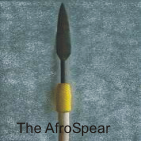Although all blood is made of the same basic elements, not all blood is alike. In fact, there are eight different common blood types, which are determined by the presence or absence of certain antigens – substances that can trigger an immune response if they are foreign to the body. Since some antigens can trigger a patient's immune system to attack the transfused blood, safe blood transfusions depend on careful blood typing and cross-matching.
The blood table below, broken out by "race," shows that blood types do not obey superstitious sociological and cultural notions of "race". The following chart from the American Red Cross shows that if all Caucasians received O+ blood transfusions on the logic that O+ is most common among Caucasians, then sixty-three percent of white people would receive the WRONG blood type during transfusions.
Most white people would have a higher chance of receiving the proper blood type from an Hispanic person (53%O+) than they would from another white person, since the most common blood type among whites is (O+ 37%) and is also most common among Hispanics (O+53%) of Hispanics have that blood type.
If a white person with type O+ blood needs a battle-field transfusion and medics don't know the blood types of another white person available and an Hispanic person available, the best bet (53% O+) would be to give the white person a transfusion from a Hispanic person--NOT another white person.
All white people have a lesser chance of having O+ blood than do Hispanics (O+53).
Caucasians | African American | Hispanic | Asian | |
O + | 37% | 47% | 53% | 39% |
O - | 8% | 4% | 4% | 1% |
A + | 33% | 24% | 29% | 27% |
A - | 7% | 2% | 2% | 0.5% |
B + | 9% | 18% | 9% | 25% |
B - | 2% | 1% | 1% | 0.4% |
AB + | 3% | 4% | 2% | 7% |
AB - | 1% | 0.3% | 0.2% | 0.1% |
. . . patterns of ABO, Rh, and Diego blood type distributions are not similar to those for skin color or other so-called "racial" traits. The implication is that the specific causes responsible for the distribution of human blood types have been different than those for other traits that have been commonly employed to categorize people into "races." Since it would be possible to divide up humanity into radically different groupings using blood typing instead of other genetically inherited traits such as skin color, we have more conclusive evidence that the commonly used typological model for understanding human variation is scientifically unsound.
The more we study the precise details of human variation, the more we understand how complex are the patterns. They cannot be easily summarized or understood. Yet, this hard-earned scientific knowledge is generally ignored in most countries because of more demanding social and political concerns. As a result, discrimination based on presumed "racial" groups still continues. It is important to keep in mind that this "racial" classification often has more to do with cultural and historical distinctions than it does with biology. In a very real sense, "race" is a distinction that is created by culture not biology.





1 comment:
Hispanics are not, have never been, and will never be a race. Hispanics can belong to any racial group. The terms Hispanic/Latino is a linguistic and cultural category, not biological.
Post a Comment